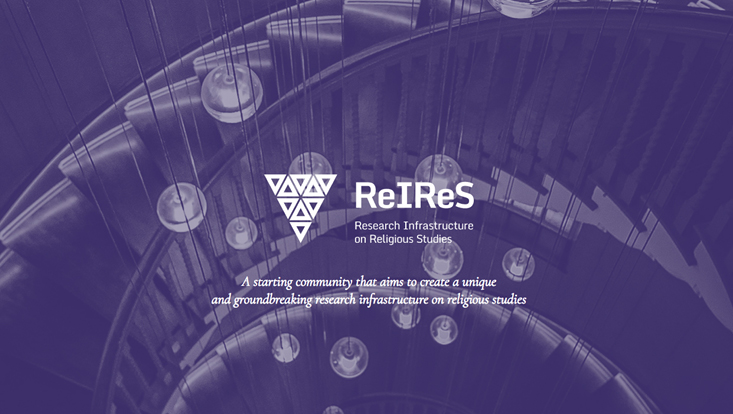Completed Projects
Jewish Moralistic Writings of the Early Modern Period (Emmy Noether)
- Titel: Jewish Moralistic Writings (Musar) of the Early Modern Period: 1600-1800
- Time Span: 2017-2024
- Funding: Emmy Noether Program, German Research Foundation
- Director: Prof. Dr. Patrick Benjamin Koch
- Associates: PD Dr. Ilaria Briata, Amalia Stulin
For further information, please visit the project’s website
Magia Figurata
- Magia Figurata - Visual Effect of Jewish Magical Manuscripts of the Early Modern Era (defended)
- Supervisor: Prof. Giuseppe Veltri
The research project entitled “Magia Figurata” intends to analyse, describe and categorise the physical and visual characteristics of early modern manuscripts containing Jewish magical texts. It thereby aims at achieving a better understanding of physical and visual aspects of the production and use of these magical manuscripts. The project will also illustrate how magical manuscripts shaped or even created reality due to the inherent authority they were claimed to possess.
Contact Information
Sonderforschungsbereich 950
Manuskriptkulturen in Asien, Afrika und Europa
Centre for the Study of Manuscript Cultures
Warburgstraße 26
20354 Hamburg
Germany
Tel.: +49 40 42838 - 9404
Fax: +49 40 42838 - 4899
e-Mail: michael.kohs"AT"uni-hamburg.de
ReIReS
Research Infrastructure on Religious Studies
ReIReS ist eine neues Projekt, desen Ziel es ist, eine einzigartige und bahnbrechende Forschungsinfrastruktur für Religionswissenschaften innerhalb des europäischen Forschungsraums zu schaffen.
Förderdauer
2018-2021
Förderer
Europäische Union, Horizon2020, Research and Innovation Programme
Agreement No. 730895
Beteiligte Institutionen
- Fondazione per le scienze religiose Giovanni XXIII/ Italien
- Sofiiski Universitet Sveti Kliment Ohridski/ Bulgarien
- Katholieke Universiteit Leuven/ Belgien
- Consiglio Nazionale Delle Ricerche/ Italien
- Universität Hamburg/ Deutschland
- Uniwersytet Warszawski/ Polen
- Johannes Gutenberg-Universität Mainz/ Deutschland
- École Pratique des Hautes Études/ Frankreich
- Leibniz-Institut für Europäische Geschichte/ Deutschland
- Brepols Publishers NV/ Belgien
- Stichting Refo500/ Niederlande
- Theological University of Apeldoorn/ Niederlande
Mitarbeiterinnen an der Universität Hamburg
Dr. Libera Pisano, Katharina Hillmann
Weitere Informationen und Kontakt
ReIReS: www.reires.eu
EU: www.cordis.europa.eu/project/rcn/213376_de.html
E-Mail: katharina.hillmann@uni-hamburg.de
SFORNO
- Title: Between two worlds: The tractate "Light of the Nations" of ‘Ovadyah Sforno (ca. 1475-1550)
- Time Span: 2015 - 2021
- Sponsor: Deutsche Forschungsgemeinschaft (DFG)
- Director: Prof. Giuseppe Veltri
- Associates: Giada Coppola, Florian Dunklau
At the core of this project is the philosophical work 'Or Ammim by Ovadyah Sforno (1475?-1550) ("Light of the Nations", first print: Bologna 1537). Although he is known as one of the most eminent Biblical commentators, Sforno’s philosophical works have remained largely unnoticed. He is considered the last Hebrew scholar to have produced a book on central questions of medieval religious philosophy written in the classical form of a scholastic 'Summa'. His work attempts to defend Jewish dogmas against Aristotelian-Averroist arguments, thereby setting Judaism on a rational footing. Sforno is an example of cultural intermediation in the Italian Renaissance. He gained a doctorate in medicine at a Christian university, and self-translated his work into Latin in order to make it accessible to his Christian colleagues ("Lumen Gentium" (first print: Bologna 1548)).
The project aims to produce both a new Hebrew critical edition “The Light”, based on the original print and a previously unknown unique autograph manuscript, and the first scientific edition of the author’s own remarkable Latin translation. Both versions will be translated into English for the first time, making the whole work accessible to the respective academic audience, i.e. scholars in Jewish Studies, Latin Studies, Renaissance Studies, Philosophy and Theology. A lexicographical analysis of the ways in which Sforno uses terminology in both works will shed light on the development of the Hebrew scientific and philosophic language, thereby contributing a comparative study to the intercultural phenomenon of the translation movement from Hebrew to Latin and Latin to Hebrew. A commentary to the work will contextualise and give insights into Sforno’s thinking in the light of General (Greek, Latin and Arabic-Islamic) and Jewish philosophy. Finally, much of the project will focus on the relationship of this work to the author’s exegetical writings, which are marked by his method of rational and philosophical reasoning.
The outcome will be a comprehensive two-volume edition that will add a crucial but neglected aspect to our knowledge of this influential Jewish exegete and philosopher of the early modern period.

